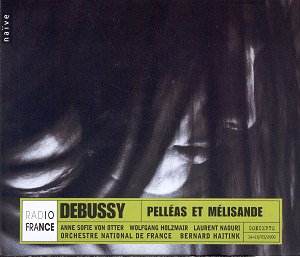 Composer: Gustav Mahler
Composer: Gustav Mahler
Works: Symphony No. 1 in D
Performers: Philadelphia Orchestra, Ricardo Muti (conductor)
Recording: Recorded in Memorial Hall, Fairmount Park, Philadelphia, February 1984
Label: EMI Classics Encore 5 74963 2
Mahler’s Symphony No. 1, often regarded as a cornerstone of the late Romantic symphonic repertoire, emerges as a vibrant yet complex tapestry of orchestral color and thematic development. Composed between 1884 and 1888, this work reflects the composer’s early stylistic explorations before he fully embraced the monumental structures and profound emotional landscapes that characterize his later symphonies. The Philadelphia Orchestra, under the baton of Ricardo Muti, presents a recording that captures both the grandeur and the subtleties of Mahler’s inaugural symphonic journey, albeit through a lens that suggests a certain interpretative detachment.
Muti’s approach reveals a meticulous attention to the orchestral score, showcasing the Philadelphia Orchestra’s formidable technical prowess. From the outset, the introduction of the first movement unfolds with a serene majesty that floats in the air, yet it lacks the atmospheric shimmer that can imbue this section with a sense of haunting foreboding. The orchestral colors are rendered with a commendable clarity, though the emotional depth often associated with Mahler’s music occasionally feels muted. The transition into the main thematic material is marked by a certain detachment, suggesting that Muti’s interpretation, while polished, may not delve deeply into the psychological undercurrents that Mahler so masterfully weaves.
As the performance progresses into the second movement, Muti’s interpretation remains resolutely refined, capturing the delightful dance-like quality of the music. However, the nuances of the “sickly” trio section seem to evade a more probing exploration. Here, the interpretation leans towards a celebratory surface, rather than engaging with the darker undertones that are integral to Mahler’s vision. The lower strings articulate their lines with admirable precision, yet the overall effect lacks the depth of feeling that a conductor more attuned to Mahler’s idiom might provide.
The third movement’s opening, introduced by the solo double bass, is marked by a subdued elegance; however, it lacks the grotesque character that would typically animate this section. Muti’s reading here feels somewhat conventional, obeying the score without fully embodying the emotional turmoil that underpins Mahler’s early voice. The elegant refinement he employs, while technically adept, may lead one to question what could have been achieved under the direction of a conductor more intimately familiar with Mahler’s oeuvre, such as Kubelik or Bernstein.
Conversely, the finale bursts forth with robust energy. Here, the orchestra’s virtuosic capabilities shine, with Muti balancing the grand romantic themes against the orchestral backdrop with commendable restraint. The horns, in particular, resonate beautifully in the recording, capturing the climactic intensity of the movement without succumbing to self-indulgence. The coda, featuring a towering orchestral sound, manages to retain eloquence, ultimately steering clear of the overblown theatrics that can mar lesser performances.
EMI’s engineering team deserves particular commendation for their exceptional sound quality, capturing the Philadelphia Orchestra’s sonic splendor within the unique acoustic of Memorial Hall. The recording presents the orchestra in all its glory, with a depth and clarity that allows for a nuanced appreciation of Mahler’s intricate orchestration. However, a puzzling inconsistency arises in the liner notes, which inaccurately attribute the title “Titan” to Mahler’s First Symphony, a label that the composer himself discarded in later revisions.
The performance represents a commendable endeavor, showcasing the Philadelphia Orchestra’s virtuosic capabilities and Muti’s capable conducting. Yet, it also illustrates the limitations of an interpretation that does not fully engage with the psychological and emotional complexity inherent in Mahler’s music. While this recording stands as an enjoyable showcase of orchestral brilliance, it ultimately falls short of delivering the profound experience that Mahler’s First Symphony can provide when executed with deeper insight and emotional resonance.



